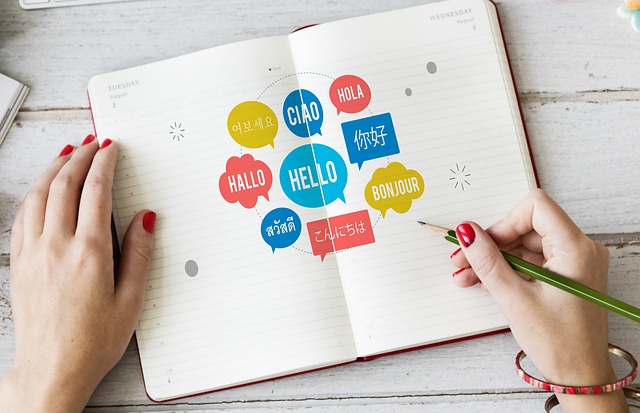The rise of artificial intelligence (AI) has revolutionized numerous industries, and the world of translation is no exception. Automated translation services, once reliant on basic rule-based systems, have evolved dramatically with the help of AI technologies. Businesses and individuals can now translate languages more efficiently and accurately, reducing the time and cost associated with traditional methods. AI-powered translation systems leverage machine learning and neural networks to understand context, improve translation accuracy, and offer real-time language conversion, making them essential tools for global communication.
AI-Powered Language Translation
The integration of AI in translation services has enabled faster and more accurate language conversion than ever before. AI-powered language translation systems use neural networks and machine learning models that improve with continuous data input. Unlike traditional translation methods that were often word-for-word, AI considers the context of entire sentences and phrases. This approach helps to capture the meaning of a conversation or document more effectively.
These systems are especially useful in multilingual environments such as global businesses, international collaborations, and cross-border e-commerce. AI for real-time language translation allows for instant communication across language barriers, enhancing customer service and interaction. Furthermore, AI-based systems can handle a vast range of languages, including less commonly spoken ones, offering a versatile solution for various sectors.
As AI models continue to evolve, translation accuracy improves as well. In fact, many AI translation platforms offer near-human quality translation by understanding idiomatic expressions, nuances, and the context of the conversation. This progress opens up new possibilities for more seamless global interactions, be it in personal conversations, business negotiations, or even creative content like blogs and books.
Neural Machine Translation (NMT)
Neural Machine Translation (NMT) is one of the key AI technologies driving automated translation services today. Unlike older models that translated language in chunks, NMT looks at entire sentences, paragraphs, or even documents to generate more fluent and natural translations. The result is a system that better understands the subtleties of language, making translations more coherent and contextually accurate.
NMT systems use deep learning techniques, which allow them to learn from vast datasets of text and continuously improve over time. This self-learning capability means that the more these systems are used, the better they get at translating languages. For example, popular platforms like Google Translate have switched to NMT models, which have led to noticeable improvements in the quality of their translations.
One of the greatest strengths of NMT is its ability to handle the complexity of grammar, sentence structure, and cultural differences across languages. While earlier systems struggled with idioms, slang, or context-sensitive phrases, NMT systems are much better at capturing the essence of what is being said. This makes them especially valuable in fields like legal translation, medical documentation, and other industries where accuracy is critical.
Deep Learning in Translation Services
Deep learning plays a significant role in improving translation accuracy. In automated translation, deep learning algorithms analyze large amounts of bilingual text data to identify patterns and correlations. These algorithms are capable of recognizing complex linguistic structures, making translations more accurate and contextually aware.
Deep learning models rely on multiple layers of processing, often referred to as neural networks, which enable them to process language in a more nuanced manner. These models are not static; they improve as they are exposed to more data. This constant learning process is key to the superior performance of AI translation systems when compared to older machine translation models.
Moreover, deep learning allows translation tools to understand the subtle differences between dialects, regional expressions, and formal versus informal speech. This ensures that the translation is not only accurate but also appropriate for the intended audience. By leveraging deep learning, AI translation systems are becoming indispensable in industries that require precision, such as healthcare, law, and international business.
AI for Real-Time Language Translation
One of the most practical applications of AI in automated translation is real-time language conversion. AI-powered systems allow for immediate translation of spoken or written words, which can be incredibly beneficial in situations like business meetings, international conferences, and customer service interactions.
Real-time translation tools have become increasingly sophisticated, often integrating with other technologies such as voice recognition and text-to-speech systems. This means that users can have conversations in different languages with minimal delay. The benefits of this technology extend to personal and professional settings alike. For example, real-time translation can enhance customer experience by making support available in multiple languages instantly.
In addition, real-time language translation powered by AI helps to break down communication barriers across different regions and industries. From live event streaming to global e-commerce, this technology enables businesses to reach a more diverse audience. It also helps in diplomatic and legal settings where precision and speed are crucial.
Machine Learning for Translation Accuracy
Machine learning (ML) plays a fundamental role in improving the accuracy of AI-driven translation services. By analyzing vast amounts of text data, machine learning algorithms identify linguistic patterns and improve over time. The process is iterative, meaning that the more data the system is exposed to, the better it becomes at translating languages.
One of the most significant advantages of machine learning in translation is its ability to adapt to the nuances of human language. Unlike traditional rule-based systems that were rigid in their approach, ML-powered translation models understand context, tone, and the cultural intricacies embedded in language. This is especially important for industries like legal services or healthcare, where a single mistranslation could lead to serious consequences.
Furthermore, machine learning models continuously evolve. Every translation improves the model’s ability to predict and generate more accurate language conversions. These self-learning systems are now used in popular translation platforms, providing businesses and individuals with an efficient way to bridge language gaps in real time. With continuous updates and improvements, machine learning ensures that translation services remain relevant and reliable.
Benefits of AI in Translation Services
The advantages of using AI in translation services are vast. From cost savings to increased speed, AI-driven systems offer solutions that were once thought impossible. One of the most obvious benefits is scalability. With AI-powered translation systems, businesses can handle multilingual content at scale, without needing to hire additional staff for manual translations.
Another significant benefit is consistency. Traditional translation services often suffered from inconsistencies due to human error or varying interpretations of the same text. AI eliminates much of this inconsistency by applying uniform rules and patterns to all translations. This makes it particularly useful for businesses that need to maintain brand voice across multiple languages and regions.
Moreover, AI translation services can operate 24/7, providing real-time language conversion without delays. This is essential in industries such as e-commerce, customer support, and international trade, where time-sensitive communication is crucial. The ability to translate documents, websites, and conversations quickly and accurately can greatly enhance productivity and customer satisfaction.
Conclusion
AI has significantly transformed the world of automated translation services, offering tools that are faster, more accurate, and more contextually aware than ever before. With technologies like neural machine translation, deep learning, and real-time language conversion, businesses can now communicate across borders more efficiently. The continuous improvement of AI translation systems through machine learning ensures that this technology will only get better over time, making it an indispensable tool for global communication. Whether you’re looking to translate a website, document, or conversation, AI offers a scalable and reliable solution to bridge language barriers effectively.






